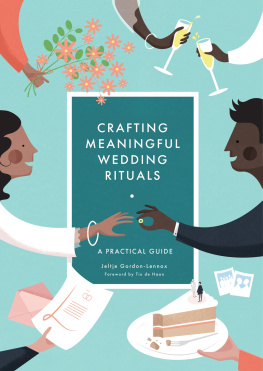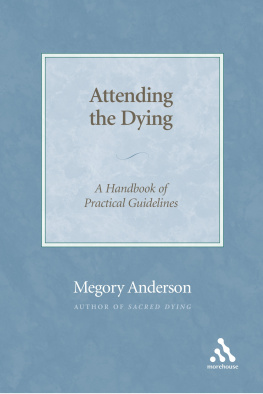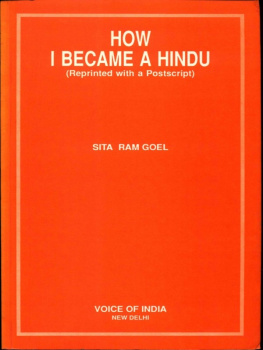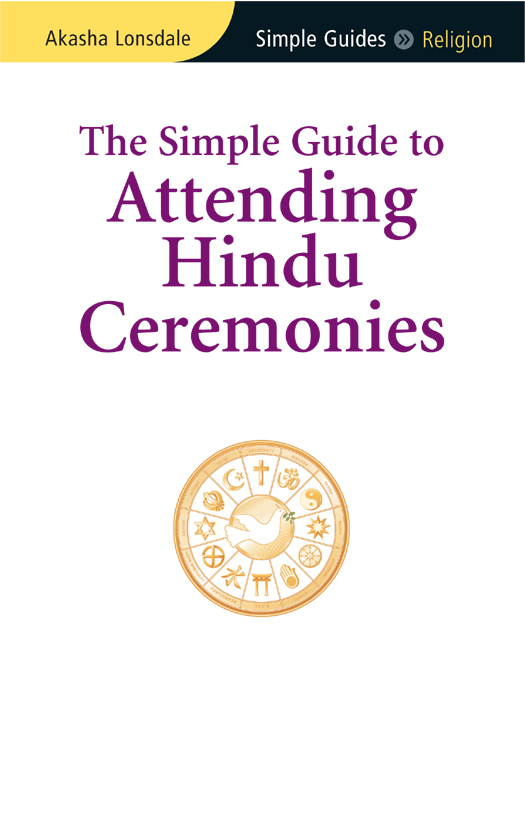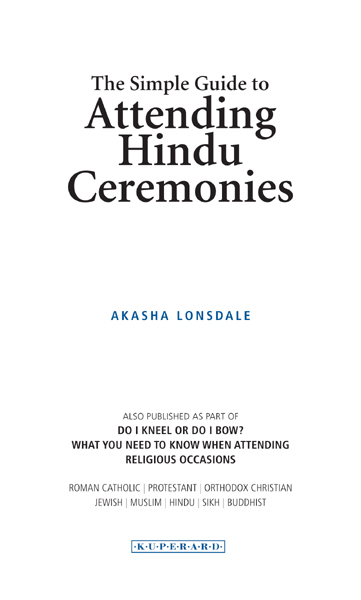Published in Great Britain by
Kuperard, an imprint of Bravo Ltd
59 Hutton Grove, London N12 8DS
www.kuperard.co.uk
Enquiries:
Copyright 2011 Kuperard
All rights reserved. No part of this publication may be reproduced, stored in a retrieval system, or transmitted in any form or by any means without prior permission in writing from the Publishers.
Series Editor Geoffrey Chesler
eISBN: 978-1-85733-651-1
British Library Cataloguing in Publication Data
This e-book first featured as part of the multi-faith volume Do I Kneel or Do I Bow? What You Need to Know When Attending Religious Occasions (ISBN 978 1 85733 524 8). It describes and explains religious ceremonies that you may be invited to attend, and offers advice on how to behave, so that you dont inadvertently give offence or cause embarrassment to yourself or others. Because of the variety of traditions, customs and cultural influences within each religion, you may experience some differences from what is described here, but the basic forms and features of the ceremonies will be the same. Other titles are:
The Simple Guide to Attending Christian Ceremonies (eISBN 978 1 85733 646 7)
The Simple Guide to Attending Orthodox Christian Ceremonies (eISBN 978 1 85733 647 4)
The Simple Guide to Attending Jewish Ceremonies (eISBN 978 1 85733 648 1)
The Simple Guide to Attending Muslim Ceremonies (eISBN 978 1 85733 649 8)
The Simple Guide to Attending Sikh Ceremonies (eISBN 978 1 85733 652 8)
The Simple Guide to Attending Buddhist Ceremonies (eISBN 978 1 85733 653 5)
Photo on Akasha Lonsdale
Images on the following pages are reproduced under Creative Commons Attribution ShareAlike Licenses 1.0, 2.0, 2.5 and 3.0: m-bot.
v3.1
ABOUT THE AUTHOR
AKASHA LONSDALE is an Interfaith Minister whose vocation brings her into frequent contact with with people of every faith and none. Her two-year seminary training in London included instruction in the major religions and sacred traditions of the world.
She has practised as a psychotherapist, both privately and within Britains National Health Service. Her corporate background was in senior human resource management. She is an executive coach, trainer, seminar speaker and frequent contributor to the media on topical issues. Specialising in Emotional Intelligence and Stress Management, she has written for a variety of publications, and her book How to Do Life Powerful Pointers for Powerful Living is a popular self-help title in the United Kingdom.
Akasha Lonsdale brings to The Simple Guide to Attending Hindu Ceremonies an informed, sympathetic and practical approach born of wide knowledge, personal experience and psychological insight.
CONTENTS
WHATHINDUSBELIEVE
Hinduism has evolved over millennia, with roots going back to the civilizations of the Indus Valley in the third millennium BCE . The spiritual path and way of life that emerged in India became the Vedic Dharma (the Divine Knowledge), also known as Sanatana Dharma (the Eternal Law) and later as Hinduism. Today India and Nepal are, formally, secular countries, but the majority of Indians and Nepalese are Hindus, and there are Hindu communities around the world.
Hinduism is a complex religious system, but, contrary to appearances, is a monotheistic faith, with belief in a Supreme Being. This universal spirit, or ultimate reality, is Brahman, or Nirguna-Brahman, meaning without attributes, sometimes referred to as That. The visible manifestations of Brahman are called saguna, meaning with attributes. Three forces arise out of Brahman. Known as the the Trimurti, these are often depicted as a three-headed image. They are Brahma, the creator; Vishnu, the sustainer; and Mahesh or Shiva, the destroyer. The female principle of Shiva is Shakti, worshipped in her own right, and sometimes known as mata (mother) or devi (goddess).
Their respective consorts some say, the representations of their feminine attributes are Saraswati, goddess of learning, knowledge and the arts; Lakshmi, goddess of beauty and prosperity; and Parvati, goddess of love and devotion, although her darker sides are represented in Durga, goddess of overcoming difficulties, and Kali.
The incarnations of the Trimurti are known as avatars. Vishnu has had numerous mythical avatars, the best known being Lord Krishna, whose consort is Radha. Followers of Vishnu, also known as Narayan, are called Vaishnavites, and sometimes wear sandalwood paste in vertical stripes on their foreheads. Two of Shivas incarnations are Pashupati, champion of animals, and Nataraj, king of the dance. Shaivites wear ritual ash in horizontal stripes on their foreheads.
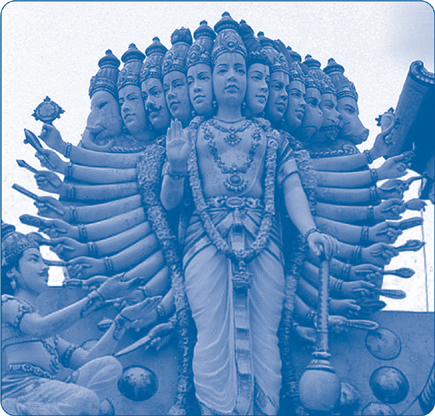
Statue of Lord Krishna revealing the avatars of Vishnu.
Another key aspect of Hinduism is the Jivatman, the soul, or divine consciousness residing in each individual. This is part of the eternal Atman, the Supreme Self with a capital S, to distinguish it from the Ahamkara, the small ego-driven self that experiences human suffering. This concept is what makes Hinduism a non-dualist religion, believing as it does that we are Brahman (God/Atman) and Brahman is ourselves, that is, there is no separation: we are one. The goal of meditation, chanting and devotion to spiritual practice is therefore to reconnect with the Supreme Self that we always have been and always will be.
SAMSARA, KARMA, DHARMA, MOKSHA
Hindus believe in samsara, or the transmigration of souls, and life is lived with awareness of karma, the law of cause and effect. This means that what you do in this lifetime will be stored up as sanskaras (imprints in the non-physical body) that return with each rebirth and influence how well, or otherwise, your life goes next time round. It is said that each lifetime brings the opportunity to burn past sanskaras by living a righteous life of dharma (truth) and following spiritual practices. It is hoped that this minimises the number of rebirths, or improves their quality, and ultimately leads to moksha freedom from the cycle of life, death and rebirth.
DEITIES
Human beings seem to need a focus for devotion, and Hinduism accommodates this by including human attributes in that focus. For example, Hindus might pray to Saraswati, the goddess of knowledge and learning, for a good outcome in an exam; to Lakshmi, the goddess of prosperity, for financial abundance; and to Ganesh, the popular elephant-headed god, and son of Shiva and Parvati, the remover of all obstacles and Lord of auspicious beginnings at the start of a new venture. Thus Hinduism could be summarised as one reality, many paths, which makes Hindus very tolerant of other religions and beliefs.



